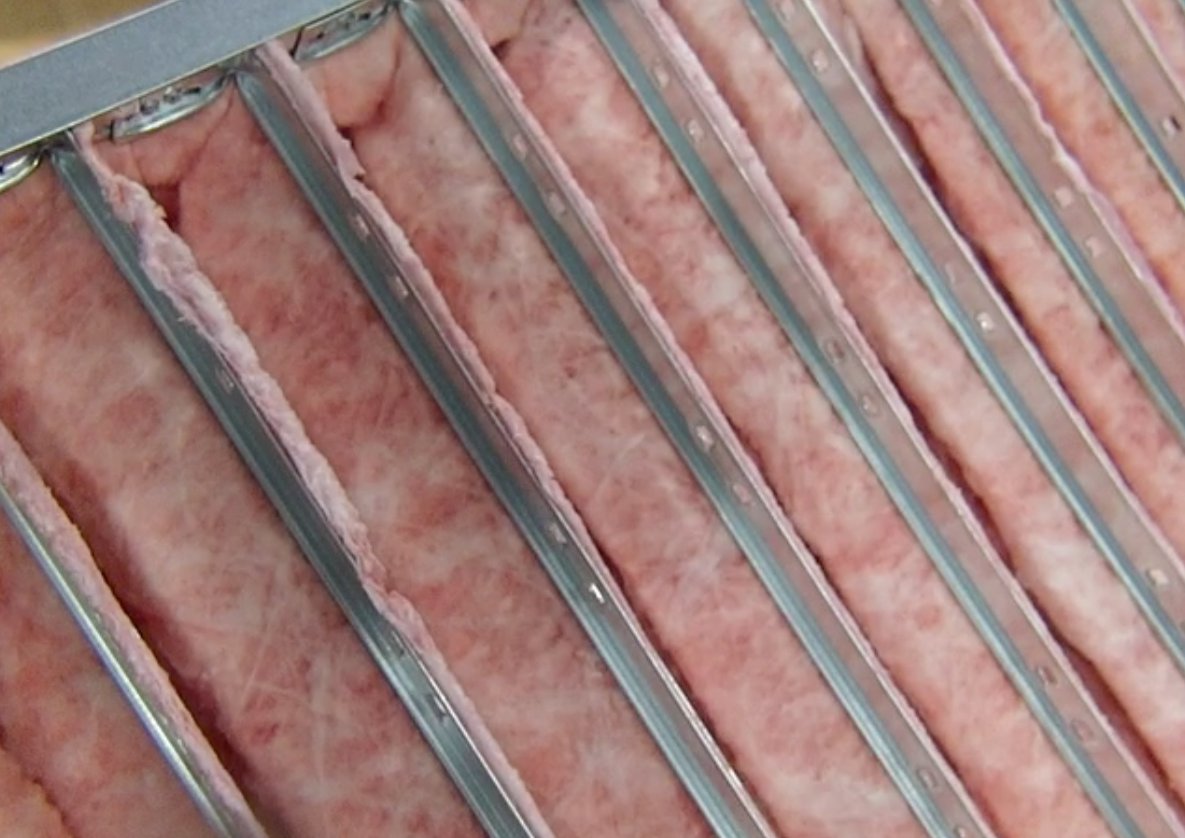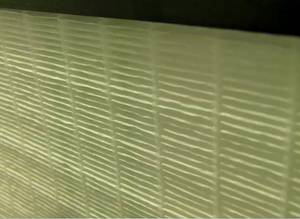Naked Engineering - Filtering our Air Supply
Interview with
Meera - This week, Dave and I are exploring the process of air filtration. Dave, what in the air would we want to filter out?
Dave - Well it depends what you want to do with the air. If you want to just make it more breathable, you might want to filter out the big particles, which will go into your lungs, or possibly get some of the pollen out there which you might be allergic to. But if you want to make a computer chip, you're going to want to get virtually everything out down to the tiny, tiny particles, micron size sort of things you get made in a diesel engine.
Meera - Another industry where this is important is the pharmaceutical industry. To find out more about air filtration here, we've come along to the process engineering company, WSP CEL in Coventry to meet Chloe Agg, the Building Services Engineer here. Now Chloe, how is a system set up in a pharmaceutical factory? What does an air handling unit look like?
Chloe - An air handling unit is a big gray box. Usually, they're about the same size as a static caravan. The purpose of this is to pull the air in from the outside, clean it up, make sure it's the right temperature, the right humidity and pump it all in to the pharmaceutical factory.
Meera - And as this air is getting drawn in, what kind of particles are you wanting to remove?
Chloe - First of all, we need to make sure that no birds can get inside the air handling unit, so we have a bird mesh for that. Then slightly smaller objects, we need to make sure that there are no flies or other insects that can get in, so we have an insect mesh. And then the next stage is a panel filter. We have one right here. It's made of cotton fibres and wire mesh and it prevents any large particles from getting into the AHU - the air handling unit.
Meera - So it's a square-shaped panel with cotton fibre material going through, but it's pleated in a vertical way, so it's pleated going all the way up through the filter.
Chloe - That's right. The filter is zigzagged along to make sure there's extra  surface area for all the air to pass through nice and slowly.
surface area for all the air to pass through nice and slowly.
Dave - Because if the air is rushing through, you're likely to force more larger particles through than if it's just moving gently, when it's likely to get jammed in the filter.
Chloe - If the air is moving more slowly through it, there's more opportunity for the particles to get trapped, and it also means that it takes less energy to pull the air through.
Meera - So at this stage, you really removed birds, insects, and large particles of things like dust as well, but you still have very small unwanted particles that you want to remove. What kind of smaller particles do you want to remove and just how small are these?
Chloe - The particles could be anything down to the size of about 0.1 micron, they can be microbes and bacteria, and all sorts of harmful things you wouldn't want in a pharmaceutical environment.
Dave - So that's a particle which is about a 500th of a human hair across. Can you still filter them by essentially a sieve process like the other filters?
Chloe - If we try to filter out those particles using the sieve process, we'd have to have such a densely matted filter that it would block almost instantly and will take loads of energy to pass the air through.
Meera - So how are these particles stopped and what kind of filter is used?
Chloe - We use a High Efficiency Particulate Air filter or a HEPA filter. Those filters are quite different to the panel filters and are usually made from glass fibre. We use glass fibres rather than cotton fibres because they're smaller and you can get a higher density of them so that the small holes between them are smaller than they are on the cotton filter. The filters are made so they've got lots and lots of surface area. They might be a bag or they might be, again, zigzags like the panel filter.
Meera - But if you're not then just sieving out these particles, how are you getting rid of things like microbes and bacteria?
Chloe - The particles are captured in one of three different ways. It might be through impaction, interception or diffusion. The larger particles tend to be captured by impaction. That means that they collide with a fibre, even though a hole next to the fibre might have been larger than the particle itself. Interception means that their particle passes near to a fibre and is attracted to it, and gets stuck. And diffusion happens only with the very, very small particles, and it works kind of like brownian motion. The small particles don't move in a straight line through the filter. They move around in a random motion and because this means they take longer to pass through the filter, it gives them more opportunities to get stuck to the fibres in other ways.
Dave - So all three of these processes are basically based on a particle moving through the filter and being attracted to a fibre, and actually just sticking to it.
Meera - What about the structure of these HEPA filters? So we've established that they can be made of glass fibres in order to capture particles, but there are also different types. So we've got two filters here in front of us and one is very - it's got these pleats going backwards, kind of away from us, but putting my hand just inside, the material is extremely soft. It feels just a bit like the lining is just cotton wool or something. That's the kind of texture it has.
Chloe - That filter is a fabric filter. So it's still made of glass fibres, but it's like the loft insulation that you get at home, nice and soft, and it gives lots of different places for their particles to get stuck to.
 Meera - Next to it, is a very rigid structure. The first filter had over 10 pleats. This one's got about 4 or 5 now and it's a lot more rigid. What's the material here?
Meera - Next to it, is a very rigid structure. The first filter had over 10 pleats. This one's got about 4 or 5 now and it's a lot more rigid. What's the material here?
Chloe - This is a paper version of the glass fibre and although it looks like there are only four pleats, actually, each of those pleats has got several hundred pleats within it.
Dave - So you get a larger surface area into the same space which means you can push the air through more slowly, thus saving energy.
Chloe - That's right and also with the rigid filter because it doesn't move in the air, it doesn't take any energy out of the air.
Meera - How long do these filters really last? They must get blocked up at some point. What happens when they do get blocked up and how do you know when they are?
Chloe - We make sure we monitor the pressure at either side of the filter and that tells us as the filters are slowly getting blocked up because the pressure drop across it will be larger. Depending on what air you're filtering, that could be anything from 3 months to a year. When you do need to change it though, it might be full of quite dangerous pharmaceutical ingredients, so you usually have to incinerate them.
Meera - How efficient are they at removing the unwanted particles?
Chloe - The filters we've got in front of us would remove 99.995% of all small particles.
Meera - That is a very high degree of accuracy, so what would the future challenges or aims even be to make this even better as filters?
Chloe - To reduce the amount of energy that they use. At the moment, the air handling units that these filters are in use about 15 kilowatts for the fan. That's just to pull the air through the air handling unit and into the pharmaceutical factory. But they could also be potentially using around 200 kilowatts of cooling to make the air cold enough to pull the moisture out to do de-humidification. And after that, you need to heat the air up to make sure that all the occupants of the rooms are nice and warm and comfortable. So you could be using another 80 or 90 kilowatts just for that. So in total, you're looking at around 300 kilowatts for one air handling unit.
Dave - So that's several family cars running flat out continuously 365 days a year.
Chloe - We take into account energy efficiency a lot in our designs now. The real challenge is to be able to design a pharmaceutical factory where there's a nice, safe, clean environment for manufacturing, but one that isn't using the same energy as several family cars continuously.
Chris - Chloe Agg who is the Process Engineer at WPS CEL showing Meera and Dave How to remove even the smallest contaminants from our air supply.










Comments
Add a comment